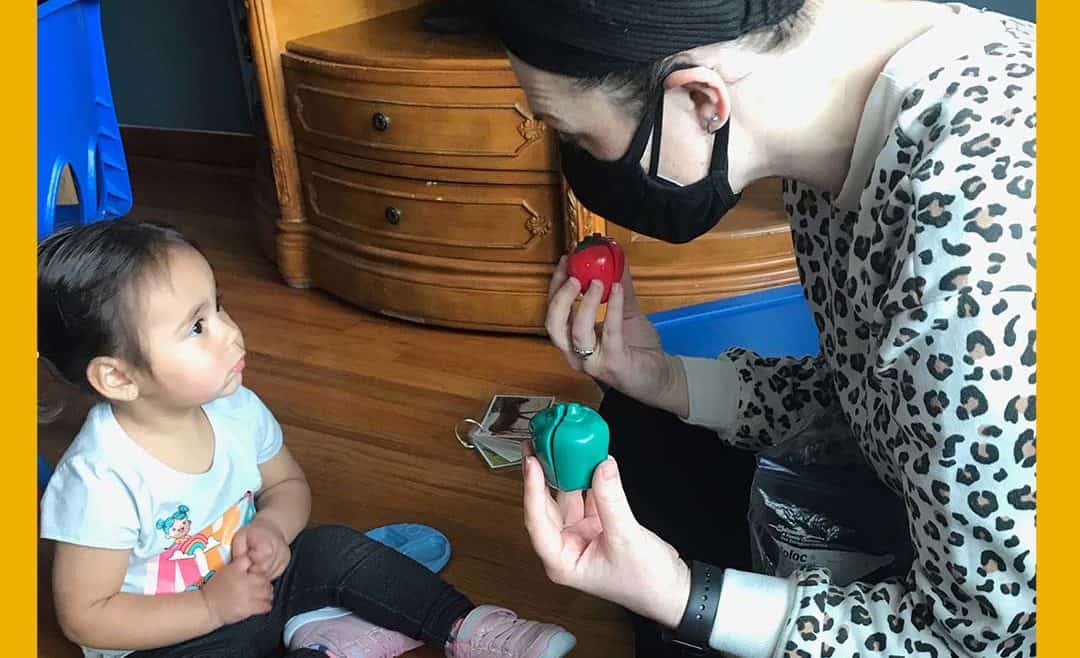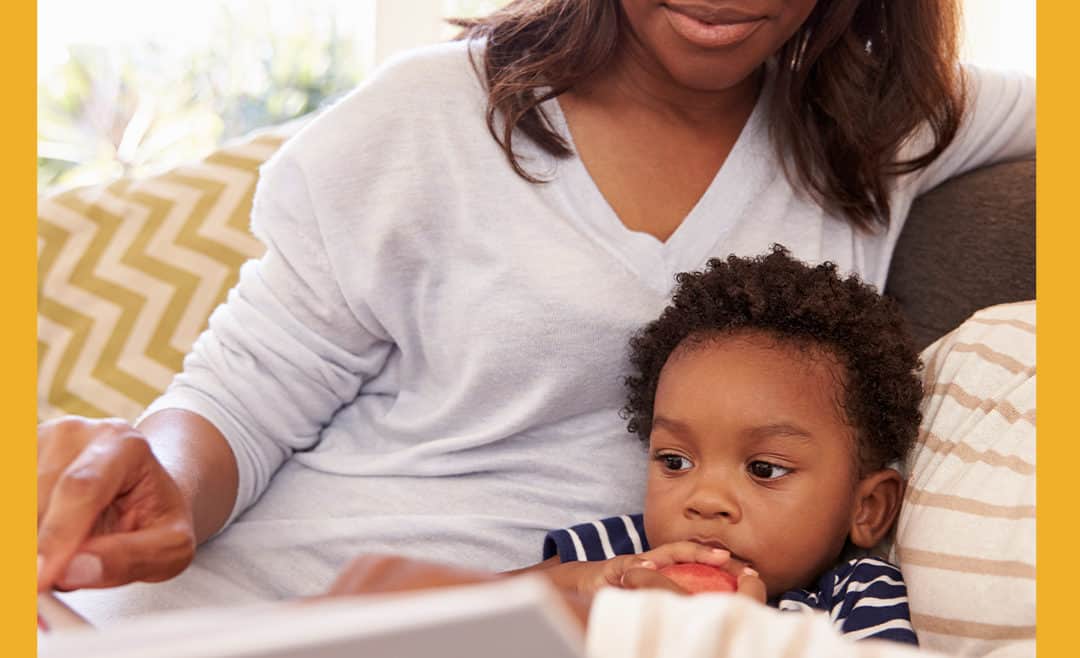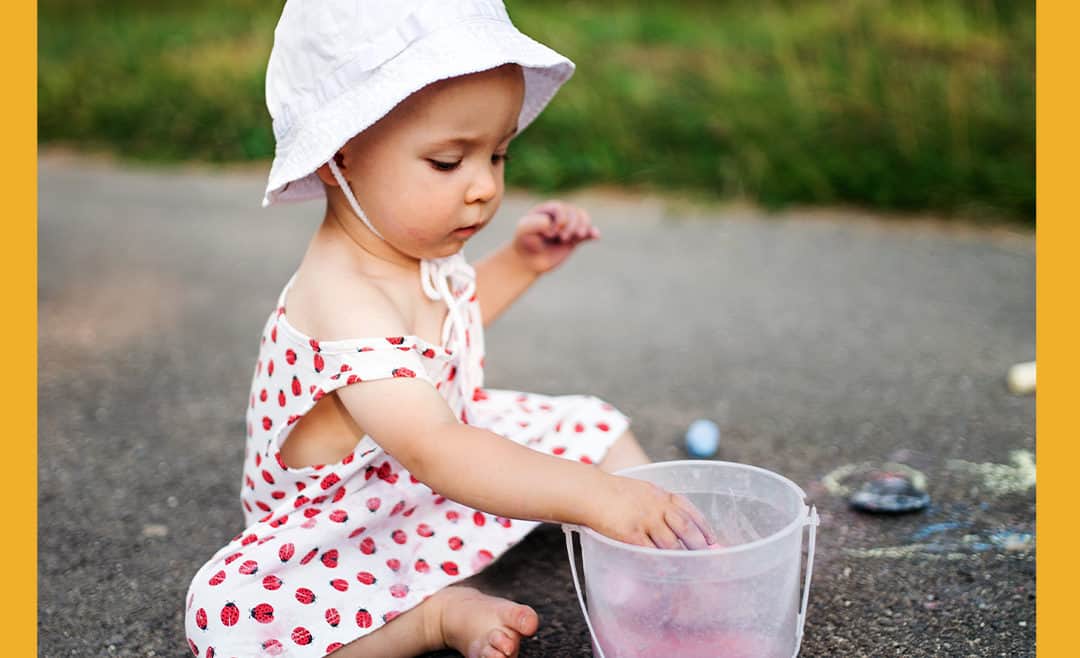Between the snow and chilly January weather, finding fun, stimulating and safe activities for kids can be a challenge for any parent.
Here in the Chicago area, we’re so fortunate to have a number of great resources and fun winter activity opportunities to help you resist the urge to turn to the iPad babysitter. There are plenty of great ways to get out of the house and allow your child to engage in important social activities with their peers. If you’re into staying in, we’ll also provide some great ideas for encouraging safe and active play in your home (even in small spaces).
Outdoor & Out-of-the-House Winter Activities for Kids
Fresh air, sunshine, and yes, even snow can be great sensory experiences for all kids, especially those with special needs. Bundle up and build a snowman, go sledding, and have fun! Even a quick 15-20 minute walk can help boost concentration and get out some of the frustrations of being cooped up indoors (…and it’s great for Mom and Dad, too)!
If you’re looking for some affordable kids’ activities in Chicago or the surrounding areas, try the Lincoln Park Zoo or the Brookfield Zoo. Both zoos offer amazing indoor play spaces, as well as hands-on activities and exploration challenges. Accessible by public transportation, the Zoo is a great space to connect with nature.
 We just love Goldfish Swim School, so we definitely recommended it as a great indoor swim space for kids. They offer family swim times and other opportunities for kids to experience swimming and water play. Working in the water has great benefits for kids with physical therapy (PT) and occupational therapy (OT) needs, as it fosters fine motor development. Plus, the social-emotional aspects of a pool environment also go far in helping children strengthen language skills.
We just love Goldfish Swim School, so we definitely recommended it as a great indoor swim space for kids. They offer family swim times and other opportunities for kids to experience swimming and water play. Working in the water has great benefits for kids with physical therapy (PT) and occupational therapy (OT) needs, as it fosters fine motor development. Plus, the social-emotional aspects of a pool environment also go far in helping children strengthen language skills.
The Chicago Children’s Museum is another great child-friendly environment. The museum is very wheelchair accessible and offers free access for all children on Thursday evenings from 5-8pm and on the first Sunday of every month. If you really want to get your kids engaged in the museum experience, try challenging them to a scavenger hunt or asking them to “find” certain items during their trip. It adds another element of exploration and makes their trip even more exciting.
“I highly recommend Flying High Gymnastics in Countryside, IL (or their additional location in Hickory Hills). I love that this gym is very child friendly and individually focused. They offer a variety of classes that are open to children of all ages. They welcome parent participation for their “Twinkling Tots” group (all children under 3) and continue to offer graduated courses for every milestone/age group. There are various open gym opportunities every day of the week, including Saturday afternoons and weekday mornings for little toddlers. Diversity is highly valued here. Children with special needs are welcome with opportunities to adapt equipment and even seek individualized instructors. (Occupational therapists are on staff.)” –Laura Vazquez, PT, DPT, Pediatric Physical Therapist, Pediatric Therapy Network
Little Beans Cafe is tons of fun and very accessible for kids with special needs and abilities. You can enjoy the family café while your child engages in imaginative and creative play. There are creative movement classes for infants, toddlers can build on their toddler skills, and they even offer hip-hop and dance classes for older kids.
Winter Activities for Kids: At Home
January is TBI (Traumatic Brain Injury) Awareness month, so it’s an appropriate time to touch on safe activities you can do at home, regardless of needs and ability levels. All children need activity and physical stimulation within a safe and comfortable space.
In the summer months, outdoor activities abound—from the park to the pool, city and suburban kids have plenty of chances to get outside and enjoy the fresh air. During the winter, getting that same activity level in can present a bit more of a challenge, especially for kids without a yard or a play space within their home.
— Setting up a Play and Activity Space
 Movement and activity is key from a physical therapy perspective. Occupational therapists also know that, for kids, play IS their occupation and movement is even important for speech and language activities as well. No matter your child’s needs, the importance of regular movement and activity can’t be overstated.
Movement and activity is key from a physical therapy perspective. Occupational therapists also know that, for kids, play IS their occupation and movement is even important for speech and language activities as well. No matter your child’s needs, the importance of regular movement and activity can’t be overstated.
Depending on the size of your home, you may need to get a little creative when setting up a safe space. First of all, look around at the resources you have on hand. Clear a space in your living room (flip up couch cushions and cover table corners and anything hard or sharp). If you have more space in the basement, kitchen or even in a bedroom, consider moving furniture and pushing beds to the side of the room to create more space. It’s all about creating a safe, open space where your child can really move around.
— Fun Ideas for Indoor Activities
From there, the sky’s the limit in terms of activities:
- Nerf balls and baskets can be great to get kids dunkin’ and movin’.
- Turn on some music and start a dance party.
- Come up with an obstacle course or challenge where kids have to engage in two or three activities in rapid succession. Try working on catching and tossing a ball, balancing, tossing a yo-yo or beanbags, or even blowing bubbles.
- Rethink “indoor activities” and bring some of your favorites inside, modified to fit your space. Play leapfrog, create a circus ring complete with performers, or put on a short theater play with older kids.
“To curb winter blues, many toddlers love scavenger hunts! They get a thrill discovering hidden toys or just spotting them around the room. Involve them in hiding toys as well, for siblings and parent participation. After they find the toy, they can return to home base (a puzzle board or other task) after navigating through creative obstacle courses. If indicated and safe, couch cushions, improvised low balance beams, and stepping stones can be great additions to the obstacle course.
 Be sure to check with your therapists about any precautions for using equipment and if your child may be more at risk for any head or neck injuries. As long as the child can adapt, falling is a skill to be mastered and is a necessary part of growth! Enjoy this season, and stay warm and bundled!” –Laura Vazquez, PT, DPT, Pediatric Physical Therapist, Pediatric Therapy Network
Be sure to check with your therapists about any precautions for using equipment and if your child may be more at risk for any head or neck injuries. As long as the child can adapt, falling is a skill to be mastered and is a necessary part of growth! Enjoy this season, and stay warm and bundled!” –Laura Vazquez, PT, DPT, Pediatric Physical Therapist, Pediatric Therapy Network
Engaging in active, social play (instead of too much TV time) allows your child to build and hone the skills they need. For example, include activities that involve blocks and building or beads and crafts to help them really refine dexterity skills and boost concentration.
At Pediatric Therapy Network, we strongly believe in-home therapy is beneficial to your child’s development, as familiar environments are where kids feel most comfortable. Rather than going “away” to an office or building, your child learns and associates their skills with their home and other familiar places like school, the park, and among their social network.
Creating a fun, stimulating indoor space can help your child fend off winter blahs and keep them making great progress, even in the coldest months. It’s an important part of keeping kids healthy and working on gross and fine motor skills, as well as social and emotional growth. Get your kids away from the screen and engaged in some fun activities this winter!
PTN specializes in Physical, Occupational, and Speech Therapy, and offers a unique home-centric approach for children in their familiar environments. If you’re looking for more great ideas for your child’s special needs, or if you have questions about our services, please contact us! We look forward to serving you and your child!









 We just love
We just love  Movement and activity is key from a physical therapy perspective. Occupational therapists also know that, for kids, play IS their occupation and movement is even important for speech and language activities as well. No matter your child’s needs, the importance of regular movement and activity can’t be overstated.
Movement and activity is key from a physical therapy perspective. Occupational therapists also know that, for kids, play IS their occupation and movement is even important for speech and language activities as well. No matter your child’s needs, the importance of regular movement and activity can’t be overstated. Be sure to check with your therapists about any precautions for using equipment and if your child may be more at risk for any head or neck injuries. As long as the child can adapt, falling is a skill to be mastered and is a necessary part of growth! Enjoy this season, and stay warm and bundled!” –Laura Vazquez, PT, DPT, Pediatric Physical Therapist, Pediatric Therapy Network
Be sure to check with your therapists about any precautions for using equipment and if your child may be more at risk for any head or neck injuries. As long as the child can adapt, falling is a skill to be mastered and is a necessary part of growth! Enjoy this season, and stay warm and bundled!” –Laura Vazquez, PT, DPT, Pediatric Physical Therapist, Pediatric Therapy Network